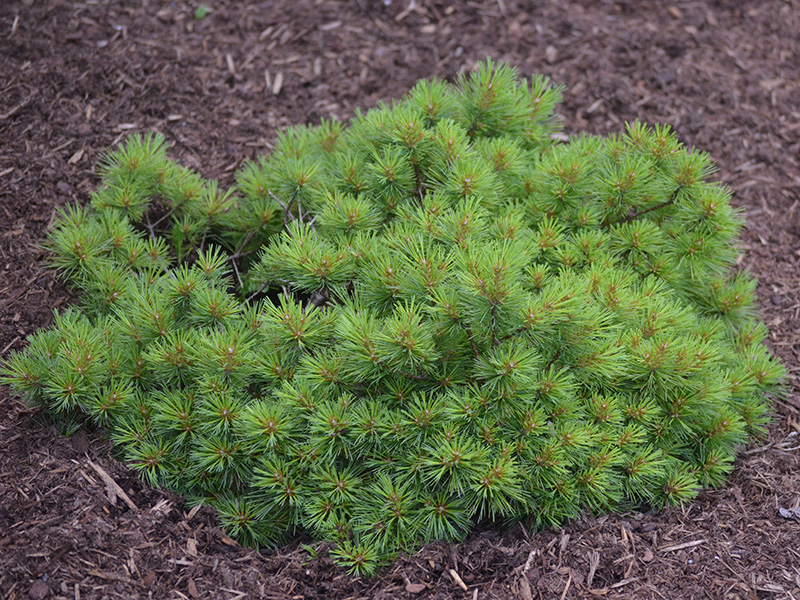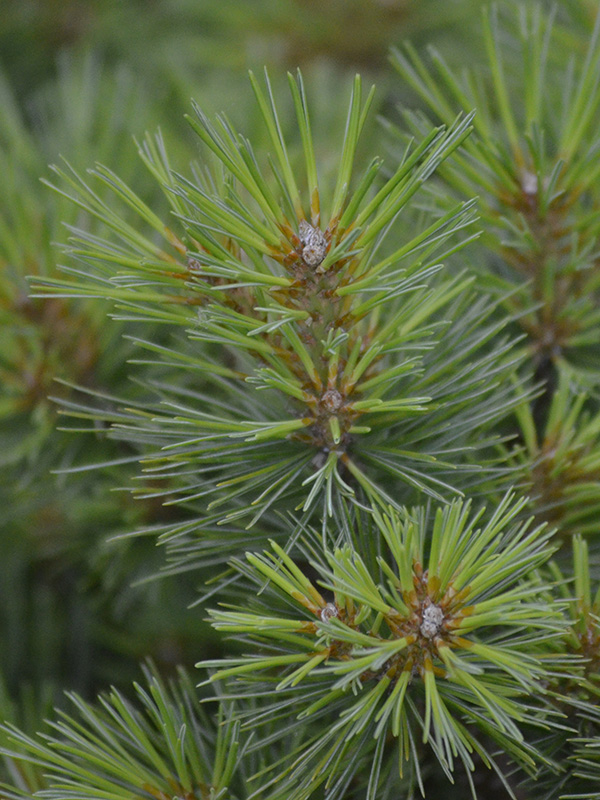
Woody > Pinus > Pinus strobus > Pinus strobus 'Horsford Dwarf'
Pinus strobus
'Horsford Dwarf'
Horsford Dwarf White Pine
Origin: Discovered as a seedling growing in Vermont by William Horsford.
| Family |
| Pinaceae |
| Genus |
| Pinus |
| Species |
| strobus |
| Cultivar |
| 'Horsford Dwarf' |
| Category |
| Woody |
| Type |
| Shrub (evergreen) |
| USDA Hardiness Zone |
| 3 - 7 |
| Canadian Hardiness Zone |
| 1a - 7a |
| RHS Hardiness Zone |
| H5 - H7 |
| Temperature (°C) |
| -40 -(-12) |
| Temperature (°F) |
| -40 - 10 |
| Height |
| 30 - 50 cm |
| Spread |
| 40 cm |
Photographs
Description and Growing Information
Flowering Period
| General Description |
| Pinus strobus 'Horsford Dwarf' is a dwarf evergreen shrub with short green needles that retain a slight yellow tinge. Its needles are in fasciles of 5 and are soft to the touch. It is a very small evergreen with a mature height of about 50 cm, thus much more compact than P. strobes 'Nana'. |
| Landscape |
| This particular dwarf cultivar is suited as an accent plant in a rock garden since it is quite compact when compared to other P. strobus cultivars. |
| Cultivation |
| Plant in fertile soil but can tolerate a wide variety of leaner soils as long as they are free draining; requires full sun. |
| Shape |
| Dense rounded, compact form. |
| Growth |
| Slow |
| ID Characteristic |
| A small conifer with a dense round form, typically very small in stature, with a mature growth of usually less than 50 cm. Very slow growing with greenish/yellow needles that are soft to the touch. |
| Pests |
| Pinus strobus 'Horsford Dwarf' is susceptible to white pine blister rust which can be fatal to the plant. It is also susceptible to aphids, spider mites, scale, bark beetles and white pine weevil. |
| Habitat |
| Horticultural origin. |
| Bark/Stem Description |
| Silver coloured smooth bark, but hidden by dense foliage. |
| Leaf Description |
| Greenish-yellow, with a white underside, to about 4-5 cm in length, held in fasciles of 5, soft to the touch. |
| Colour Description |
| Greenish-yellow needles with silver bark |
| Notable Specimens |
| Missouri Botanical Gardens, St. Louis, Missouri, United States of America. Whistling Gardens, Wilsonville, Ontario, Canada. The Gardens of Fanshawe College (Conifer Garden), London, Ontario, Canada. |
| Propagation |
| Grafted on to P. strobus rootstock, in February using a side veneer graft. Cover graft in moist peat in a mist system with bottom heat to maintain humidity. |

